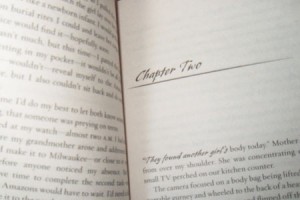 So far in our discussion of how to write a scene, we’ve talked about what scene is, both as many think of it and as Dwight Swain defines it in Techniques of the Selling Writer
So far in our discussion of how to write a scene, we’ve talked about what scene is, both as many think of it and as Dwight Swain defines it in Techniques of the Selling Writer. We’ve also gone over the importance of sequel and showing your characters motivation. Today we’ll discuss what some may get confused with sequel, sequence.
Missed the rest of the series? Start at the beginning with the first article on How to Write a Scene.
And now for Scene Sequence
So, we now know that all scenes have a goal, conflict and disaster, but sometimes there is an overlying theme/goal/idea that can’t be contained to just one scene. When this happens we need a SEQUENCE of scenes with each scene within the sequence still having that important goal, conflict and disaster. For a sequence to exist, the scenes within it do not have to occur one right after the other. They just have to be connected.
EXAMPLE:
Two hit men have a goal of dumping a body. In the first scene they start to bury it in someone’s backyard, only to have the underground sprinklers turned on them. Their scene goal (burying the body) is foiled. They move on. The next scene might cut back to our hero who, not knowing his uncle’s been killed, is arguing with his girlfriend over borrowing his uncle’s car (not part of our dumping the body sequence). Next scene we are back with our killers where they have a new goal–sinking the body in a lake. Unfortunately for them, a group of skinny dippers have decided to take a midnight swim. They are foiled again.
So, each scene with a goal that involves the bigger goal of dumping the body is part of that sequence, but other scenes may fall in between.
And finally for clarification let’s discuss CHAPTERS
This one is easy. Chapters are nothing more than a way to divide the book into chunks. They are administrative, a tool for readers to use while managing the process of reading the book. They can be long; they can be short. They can be made of one scene or many. It is completely up to the author and his/her editor.
Break chapters where you want to break them. Best choice is somewhere your reader will have a hard time putting the book down. This often means in the middle of a scene or right at the moment of disaster. Leave your reader hanging and gluttons for punishment they are, they will come back, over and over again.
So, if you’ve read all four parts of this series you should never again be confused when someone says a scene has to have this or can’t have that. You now know that scene is more than lines on a page and it isn’t defined by chapters either.
Scenes are a unit of story and without them we would have one very boring read.
Need more help with how to write a scene?
~~~
 Lori Devoti is the author of paranormal romance, urban fantasy and young adult fiction. Under the name Rae Davies, she writes the USA Today Bestselling Dusty Deals Mystery series. Check our her books at www.LoriDevoti.com and RaeDavies.com.
Lori Devoti is the author of paranormal romance, urban fantasy and young adult fiction. Under the name Rae Davies, she writes the USA Today Bestselling Dusty Deals Mystery series. Check our her books at www.LoriDevoti.com and RaeDavies.com.

0 Comments
Trackbacks/Pingbacks